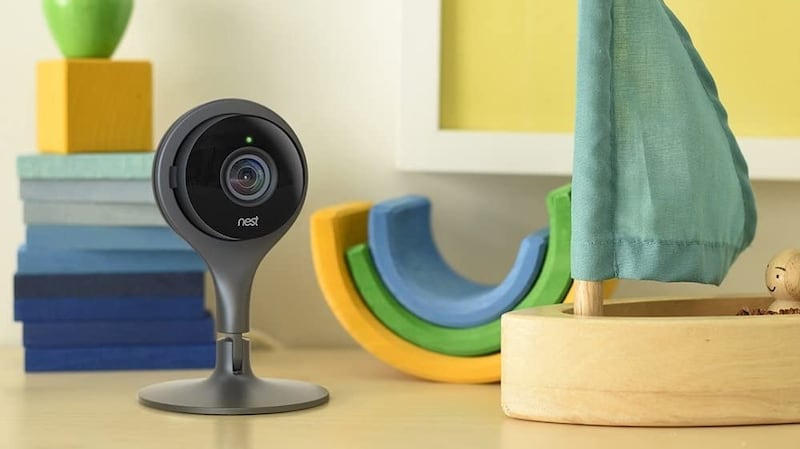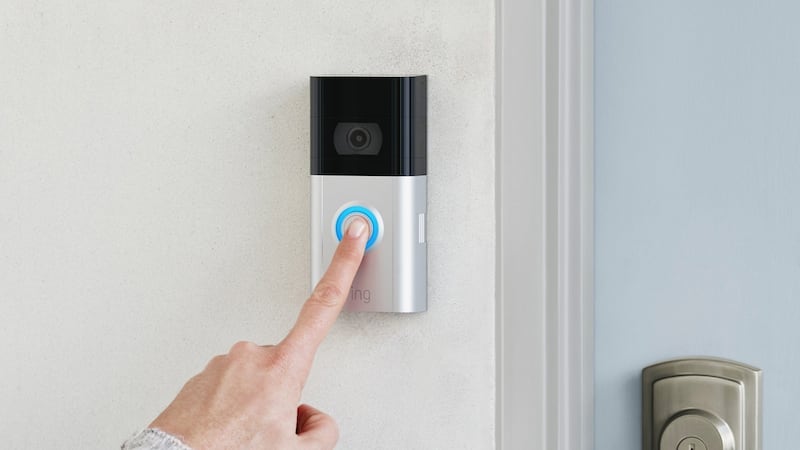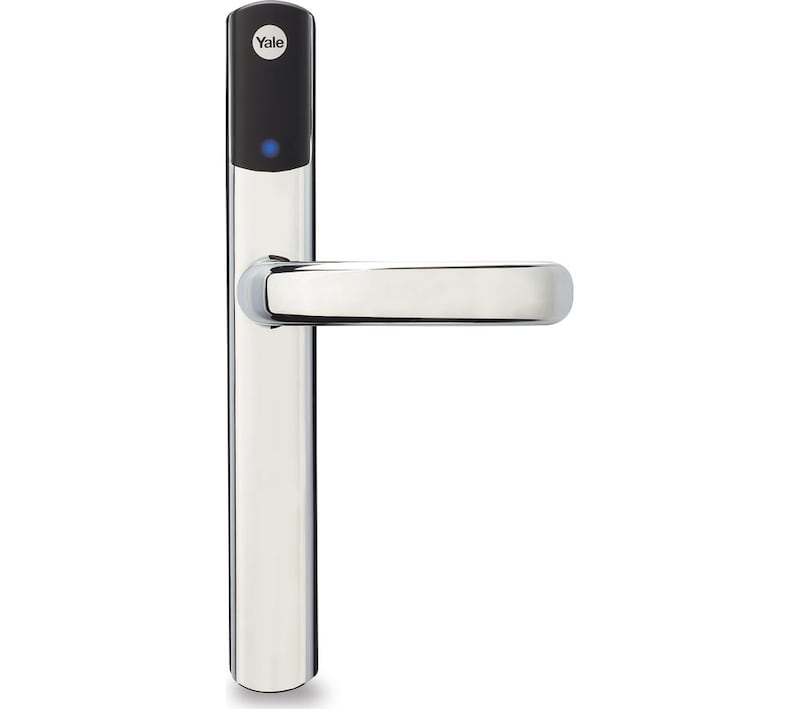The advent of longer nights is usually the cue for people to start thinking more about their home security.
While it looks like we will all be spending a little more time at home this winter, it doesn’t hurt to consider if your security system is up to scratch, and if you need to tweak a few things here and there.
You don’t need to spend thousands on a fully wired security system that monitors every movement in your home; these days, a little goes a long way. From security cameras and sensors to alert you to movement in your home to smart door locks you can open with your smartphone, there are plenty of options to help make your home feel a little safer this winter.
You can go for a full home security system, with cameras, door locks and sensors that are controlled via a single app on your phone, or you can add a single camera or a few sensors here and there at vulnerable points.
The one thing it all starts with? Good home internet. Smart home security devices are connected to your home internet so you can control them from wherever you are. In the case of video devices, that will suck up a little more of your home’s bandwidth.
Video doorbells
Fast becoming the first line of defence, the video doorbell is becoming an increasingly common sight around Irish streets. Acting as a type of CCTV for your front door, the doorbells connect with your smartphone so you can not only see who is outside your front door, but you can also talk to them as if you were at home.

That could be talking to a delivery driver trying to drop off a package and giving them instructions on where to leave it, or telling a friend you are almost home. The best thing about it is that you are aware of who is approaching your house throughout the day, whether you are there or not.
There are a number of different options. Amazon’s Ring has been around for a while, offering up both a Pro version and the Ring 3 (€229). The latest version offers 1080p HD video, with a field of vision that extends 160 degrees.
It switches automatically to night vision when the light drops below a certain level, and offers customisable motion alerts for certain zones around your front door. When it detects motion, it begins recording.
It also has a pre-roll feature that gives you an additional four seconds of video footage before the motion event was triggered, which is recorded in low resolution black and white during daylight hours, to conserve battery.
The Ring app also allows you to view what is going on outside your doorstep in real time, whether someone presses the bell or not.
The system can work for people who have a wired doorbell already installed and those who are relying on wireless bells. The latter will mean removing the battery pack and charging it every four to six months.
Ring Protect is the subscription service that allows you to record videos from your bell, and capture photos to review and save. If you only have a single Ring device, that will cost you €3 a month on the basic plan, or €30 for the year. To cover all the devices in your home, Amazon offers a Plus plan that costs €10 per month or €100 for the year.
The Nest Hello (€250) is Google’s offering in the video doorbell market. Facial recognition and continuous recording are among its selling points. Instead of being triggered by a motion alert or someone pressing the bell, the Nest has a constant stream of video recording throughout the day.
It will pick out and highlight events– motion in designated zones, sound at your front door or someone pressing the bell – to make it easier for you to spot something important, but you can scroll back through the recorded video at your leisure. It is particularly useful for figuring out if you left the car unlocked, or if you left the house with a coat you later mislaid.

The high definition, HDR video bell has a 4:3 aspect ratio so you get a full view of the person on your doorstep. If you want to set quiet times, you can disable the internal chime – as long as it’s digital – and you can also customise the chime for certain times of year.
Nest is offering a spooky theme for Halloween, and there is a regular Christmas theme that you can add to your doorbell. If you have a Nest smart speaker or home hub, you can also get doorbell alerts relayed through those devices. There are canned responses, if you don’t want to talk to whoever is at your door.
Like the Ring, Nest has its own subscription service, dubbed Nest Aware. If you sign up, you can keep video history for a certain amount of time – five days for €5 per month, or €30 for 30 days – so you can review your clips at your leisure, or set up certain motion zones around your front door. That cuts down false alerts triggered by a car passing your house, or someone walking across the path.
The subscription also adds facial recognition, so you can tell Nest Hello who is calling to your home. The next time they press the doorbell, you will be told they’re at the door by name. It can also tell a person from a thing – a car perhaps – and can alert you when a package is collected from your doorstep.
Unlike the Ring, however, the Nest Hello is best installed by a professional. It can involve swapping out a transformer, so unless you are an experienced electrician, it may be time to call in the experts.
You can find a list of installers on Nest's website. Virgin Media also offers the bell as part of its smart home packages, which includes installation by one of their Red House engineers.
Video cameras
Keeping an eye on your home is easier than ever these days, both inside and out. Internet connected video cameras give you a way of checking in even when you can’t physically be there.
Not only can the cameras act as an early warning system for you about possible intruders to your home, they can also function as alarms, with some containing built-in sirens.
If you want a single camera, you can occasionally drop in on rather than installing a whole network, the TP Link Tapo C100 Smart security camera (€40) is a relatively inexpensive way to do it.
It has two-way audio, night vision and motion detection built in, with the last customisable. When it detects motion, you will get an alert to your phone, and the camera will trigger lights and sounds as an alarm. Footage can be stored on a local storage card.

Outdoor cameras can also give you visibility of places that may otherwise be out of sight. The Ezviz C3X has one thing that many other security cameras lack – a colour night mode that doesn’t need external light. A dual lens set-up means the camera can provide colour footage even in dark environments without resorting to a spotlight. It is weatherproof and has the option of connecting to your home network via an ethernet cable, rather than relying on wifi.
If you want the spotlights, however, Ezviz’s C3N camera will give you colour night vision and AI powered person detection for about half the price of its stablemate. For £80, the camera punches above its weight. There’s a noise-cancelling microphone that will pick up audio up to 5m away, and two infrared sensors that work alongside the spotlights and dual lenses to capture night footage.
You can save your footage to a local memory card rather than entrust it to the cloud and the camera will work with Google Home and Alexa.
Like the C3X, it has the option for ethernet connection, which you may have to resort to if your home wifi isn’t rock solid; the camera is only compatible with the 2.4Ghz network in your home.
If you are already hooked into Amazon’s Ring system, you can add one of the company’s video cameras to monitor certain areas of your home. The Indoor Cam (€59) is a simple plug-in installation and can be up and running in minutes. Like the doorbell, you can talk to people in your home, and it has motion activated notifications. It’s quite compact too, so it can fit anywhere.
Prefer to wall mount your security cameras? The Ring Stick Up Cam (€99) is suitable for both indoor and outdoor use, and comes with plug-in and battery powered versions.
For extra security, the Ring Spotlight Cam (€229) adds a built-in spotlight to the high definition video and two-way talk features of the other cameras. It also offers a solar powered option, and is a bit more subtle than the outdoor Floodlight Cam. The latter has dual sensors and can detect both objects and people, before it dazzles them with its two LED spotlights, and sets off the built-in siren.
Nest also offers cameras for both inside and outside the home. Inside, you have the Nest Cam (€138) or Nest Cam IQ (€344). The main difference between the two – apart from the price – is the quality.

The IQ offers HDR, a close-up tracking view and uses a 4K sensor. It will also give you person alerts without the need for a Nest Aware subscription. Both offer the ability to listen and respond to people (or pets) so you can scare off intruders or have a chat with the dog.
The outdoor cameras have similar differences. The Nest Cam Outdoor (€226) and the Nest Cam IQ Outdoor (€373) are both weatherproof and plug into the mains so you don’t need to worry about changing or charging batteries. The IQ can detect a person from 50ft, giving you a better view of who is approaching your home.
Smart door locks
Imagine never needing a key to get into your home again. Or never needing to hand over spare keys to your house should you have guests to stay or work being carried out.
That’s where smart lock plays a role. You simply grant access to people through the accompanying app, and they can use their smartphone to enter.
The beauty of this approach is that access can be revoked as easily as it was granted.
One of the most famous names in home security has decided to back the new technology. Yale’s Conexis L1 lock is keyless, requiring a fob, keycard or a smartphone app and Bluetooth to unlock the door. Security wise, Yale says it has a built-in tamper alarm, and the security includes bank level encryption.
It looks similar to a regular door lock. There are options for both internal and external doors, so you could also bring the next level security into specific rooms in your house.
That one may be a step too far for most. Adding extra layers of security to your home with technology is one thing; replacing your physical security with something that is dependent on technology is another.











